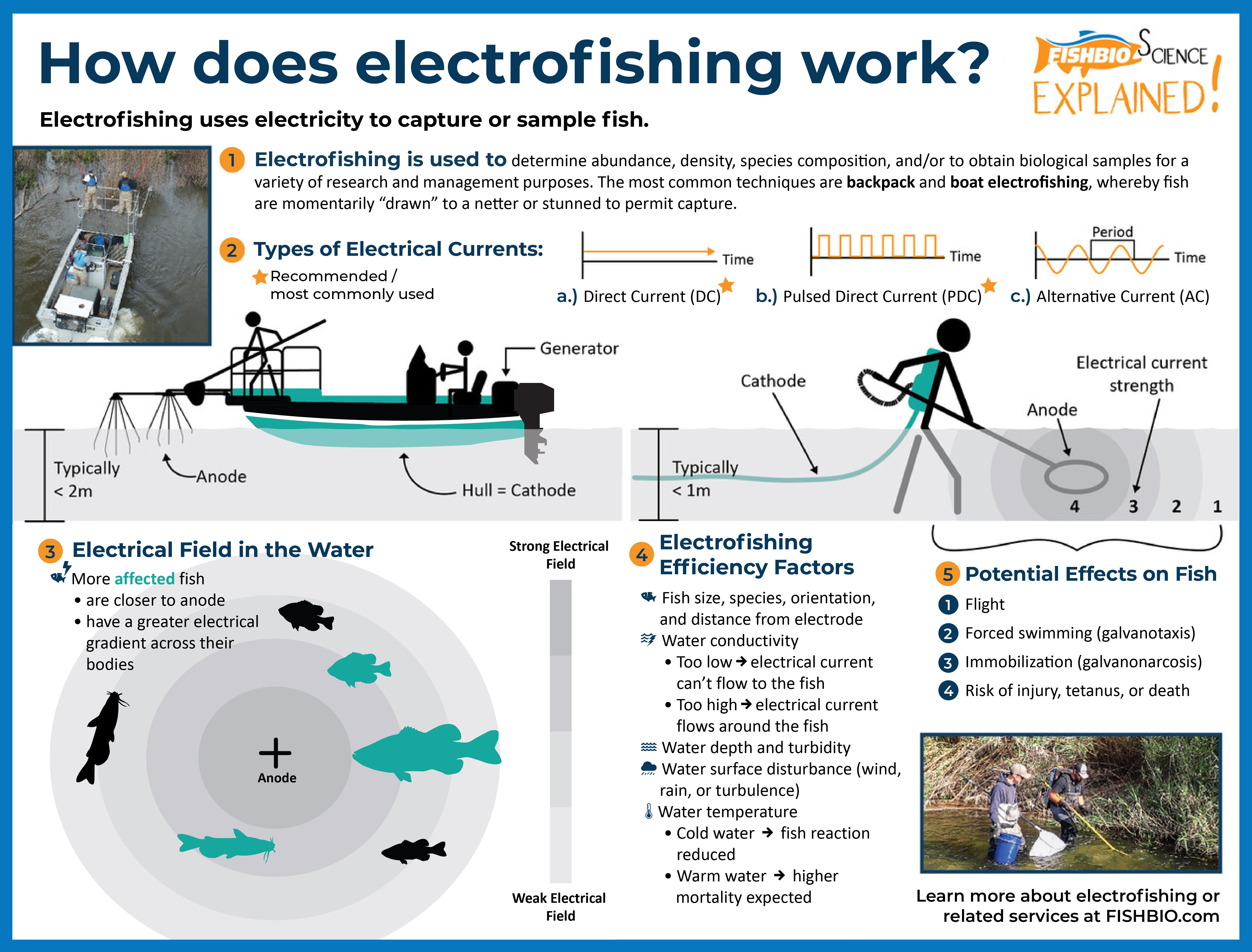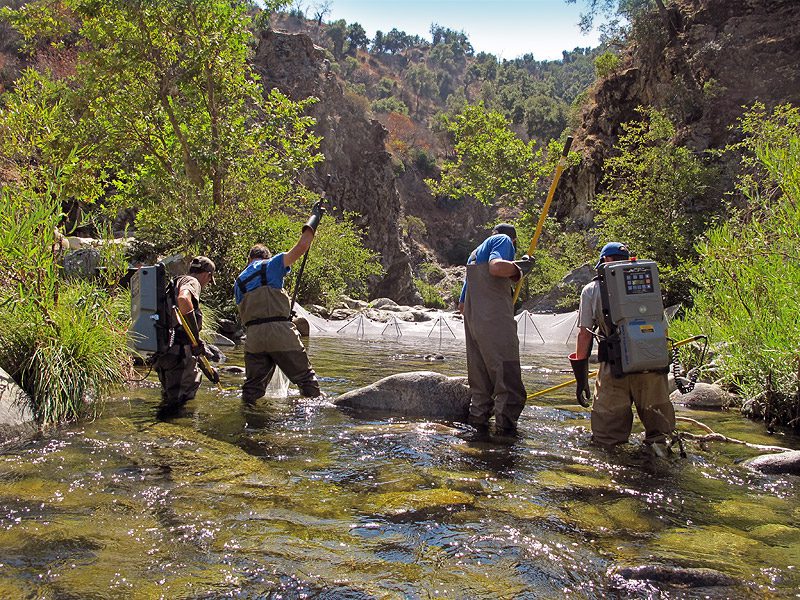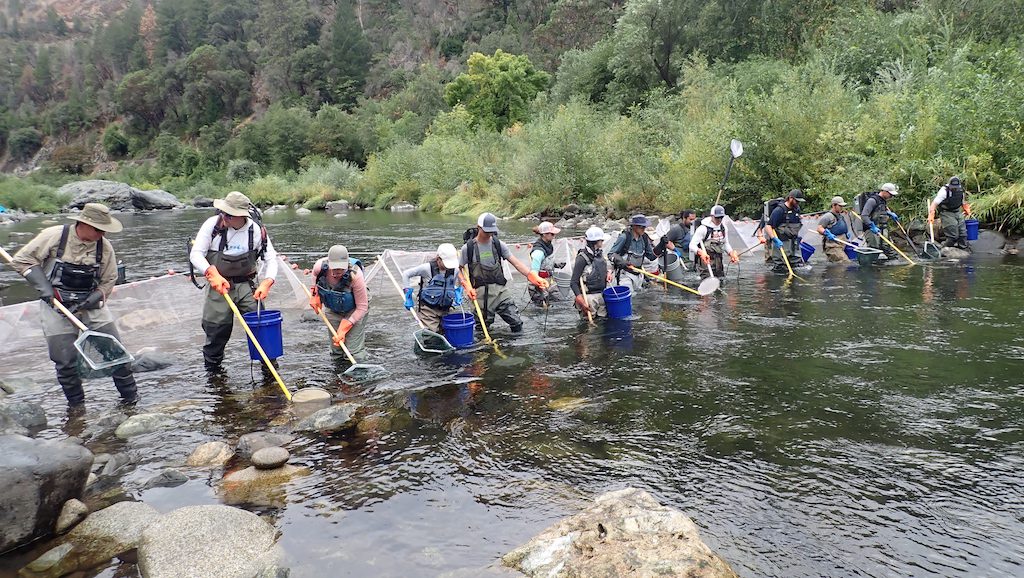Monday November 7, 2022

Few techniques in fisheries science are fraught with more misconceptions than electrofishing. Most hear the word electrofishing and visualize live electrical wires in the water making every fish in a lake float belly-up, but this image couldn’t be further from the truth! Capturing fish using electricity can be a highly effective sampling method under the right conditions. The most commonly used methods are backpack and boat electrofishing. Both are based on the same principle: an electrical field is generated in the water between two electrodes (one positively charged and one negatively charged), and fish within that field are affected by the electricity passing through their bodies. This electrical field ideally induces galvanotaxis, an involuntary swimming motion towards the anode (the negatively charged electrode), and this facilitates capture.

For electrofishing to be efficient, a number of conditions must be met. First, the conductivity of the water must be within a range suitable for electrofishing, typically between 20 and 2,000 µS/cm (micro siemens per centimeter). Conductivity is a measure of how well electricity can move through water, and it varies with salinity and the amount of other dissolved solids in the water. In a crystal clear mountain stream fed by snowmelt, conductivity may be very low, and electrofishing would require impractical amounts of power to generate an electric field. In an estuary or river with heavy agricultural runoff, conductivity may be too high and electricity will flow more easily around the fish (rather than through them). In general, electrofishing is most effective when the conductivity of the water is approximately the same as that of a fish’s body. Conductivity in most lakes and streams in California typically ranges from about 150 µS/cm to 400 µS/cm, making electrofishing a suitable sampling technique in many inland environments.
Fish size, location in the water column, and orientation to the electrode all play a large role in determining how they are affected by the electricity. For example, a large fish is more affected by an electrical current than a small fish located the same distance from the electrode, as the voltage gradient is higher across the body length of the larger fish. The same principle applies to distance from the electrode: a fish close to the electrode will be more strongly affected than a fish of the same size further from the pole. Lastly, the orientation of the fish matters, as fish parallel to the flow of electricity through the water have a lower difference in voltage across their bodies than those that are perpendicular to it, and therefore will be less affected by the electricity. Although large fish are generally more susceptible to the effects of electricity than small fish, they are usually also more skittish and can swim faster than small fish, making it more difficult to get close enough to expose them to the electrical field.

To capture fish effectively, rather than just “drawing” fish towards the anode or even immobilizing them, the netter must be able to see the fish well, often in moving water. Low light conditions, surface disturbance caused by wind, rain, or turbulence, and high turbidity all reduce the capture efficiency when electrofishing. But, when used appropriately and under the right conditions, electricity is an efficient means of sampling that has minimal effects on fish. When performed properly, electrofishing sampling mortality should not exceed a low single-digit percentage, and in many cases may be even lower than other traditional capture methods such as hook and line. Ideally, fish are netted before they become immobilized, and are quickly placed in an aerated holding container for processing. If fish are not netted promptly, the risk of injury and mortality increases, particularly if the fish are close to the electrode and thus exposed to the highest voltage.
Lastly, and most importantly, the risk of injury – or worse – is not limited to fish! Biologists operating electrofishers, as well as bystanders, pets, livestock, and wildlife, are all susceptible. While exceedingly rare, fatalities have occurred. Those who use electrofishing as a scientific tool would do well to remember the adage that “electricity and water don’t mix,” and all should receive proper training and adhere to strict protocols for the safe use of this important sampling technique.
Interested in using electrofishing for fish monitoring or research? Check out FISHBIO’s electrofisher rental service.
This post was featured in our weekly e-newsletter, the Fish Report. You can subscribe to the Fish Report here.
